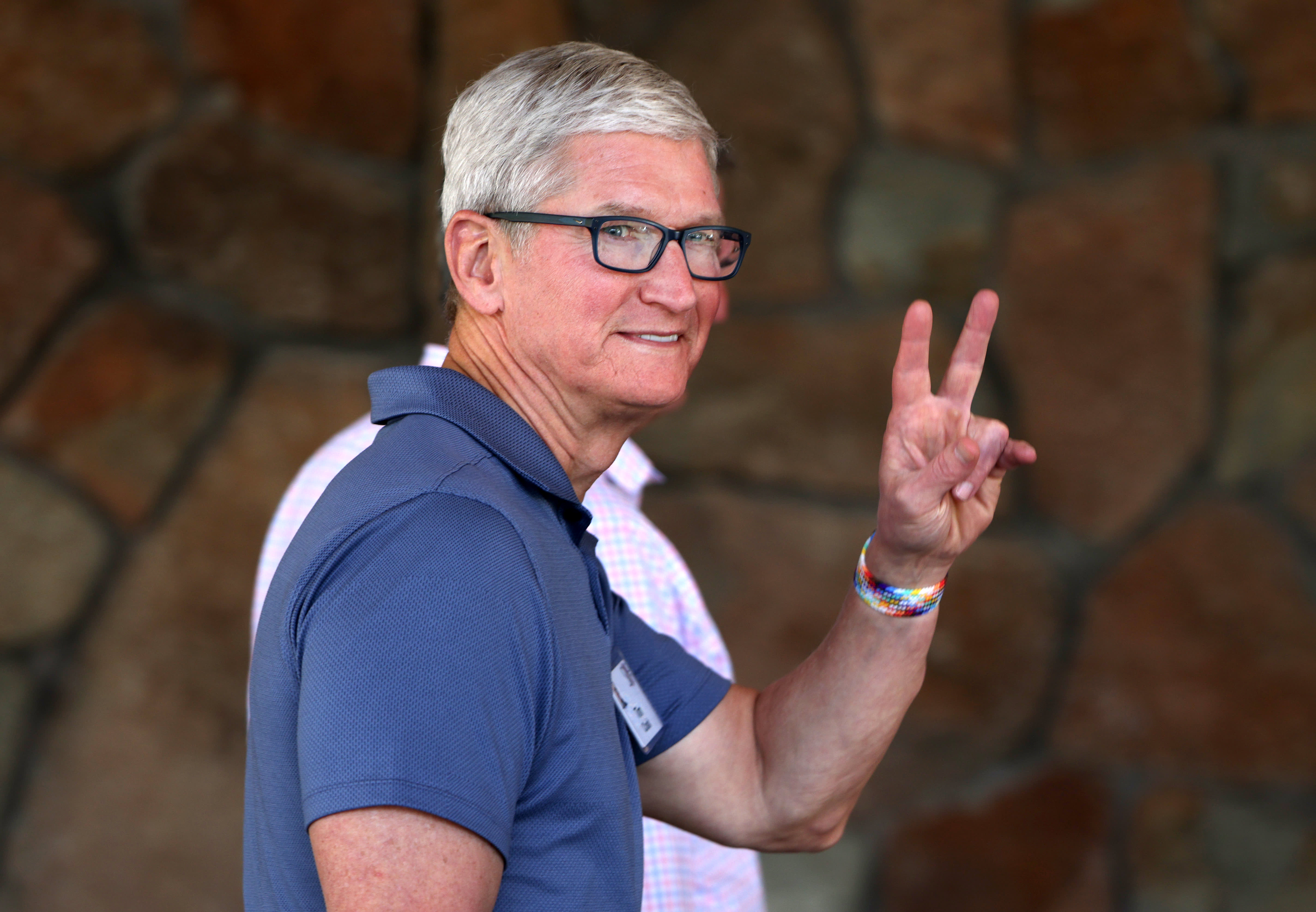At Apple’s annual launch event this week, it revealed new iPhones, iPads and Apple Watches, all of which were refinements of previous models.
What Apple didn’t release, however, was a new kind of product — Apple’s “next big thing” which customers hope will be extremely cool and investors hope will drive another decade or more of Apple growth, like the iPhone did before it.
In previous years, Apple and its CEO Tim Cook have emphasized “augmented reality,” or AR, which is a term for a collection of technologies that use advanced cameras and modern chips to be able to understand where objects are in relation to the user and place computer graphics or information over a screen showing the real world.
Eventually, believers like Facebook’s Mark Zuckerberg say augmented reality technologies will be bundled into a headset or glasses, which could represent a sea-change for the technology industry like how the original iPhone’s touchscreen created billion-dollar companies.
But at Tuesday’s event, augmented reality technology didn’t make an appearance, except for a brief mention of one AR app that runs on iPads.
Justine Ezarik, who goes by iJustine on her popular YouTube page, brought up the lack of AR at the launch in a video interview with Cook posted after the event.
In his answer, Cook repeated some of the things he’s said about AR in the past, but continued to be very bullish on the technology, calling himself “AR fan number one.”
“I think AR is one of these very few profound technologies that we that we will look back on one day and went, how did we live our lives without it?” Cook said.
Cook said that the main uses for AR technology include education, collaboration and shopping for furniture while making sure it fits in the user’s home.
“And that’s at the early innings of AR,” Cook said. “it will only get better.”
Competitors releasing glasses
AR backers say that wearing computer glasses will be a normal, everyday experience, like using a smartphone is today.
Apple has never confirmed it is building AR headsets, despite buying several startups working on key building blocks like transparent screens built into lenses and hiring hundreds of employees to work in its Technology Development Group on the project.
Some of Apple’s closest competitors have already released headsets.
Facebook released camera-equipped Ray-Ban sunglasses this week, which the company says is a precursor to more advanced products. Microsoft has been developing a high-end headset called Hololens and has a contract with the U.S. military potentially worth billions of dollars. Google kicked off the Silicon Valley obsession with computer glasses when it released Google Glass in 2013.
The lack of AR announcements at Apple’s event is not a hint that Apple has given up on the technology. Apple’s launch events are focused on hardware and products customers can buy now — not providing clues about releases in upcoming years.
None of Apple’s new devices got AR hardware, unlike in the past few years, when some models added lidar sensors that can measure how far away an object is. The new iPhone Pro’s cameras do have improved night mode, which could be a useful feature for headsets in low-light.
So far, in public, Apple has generally treated AR as a software feature. It built tools called ARKit and RealityKit for app developers to make their own iPhone AR apps without doing hard physics like triangulating the location of the user or detecting hands and faces.
Those tools did make an appearance before Apple’s event. Users with AR-capable iPhones could download a file from Apple’s website that created a portal to a California landscape, which was the theme of Apple’s launch.
The iPhone software launching on Monday, iOS 15, includes a mode where Apple Maps overlays walking directions onto the real world — big arrows telling the user where to go, on the iPhone’s screen — in a preview of what could be a major feature for a headset.
One challenge about these technologies is what to call them. Some people in the industry prefer the term “mixed reality,” which is less technical-sounding. The CEOs of Microsoft and Facebook, which are perhaps the most enthusiastic big companies about augmented reality, have started to talk about a “metaverse,” or a digital world overlaid on top of the real world.
Cook and Apple, for now, are sticking with “augmented reality.”
“There’s clearly different words out there. I’ll stay away from the buzzwords and for the moment just call it augmented reality,” Cook said in an interview with Time published this week.
